
Reports From The Mandala
Head Lama of TNMC
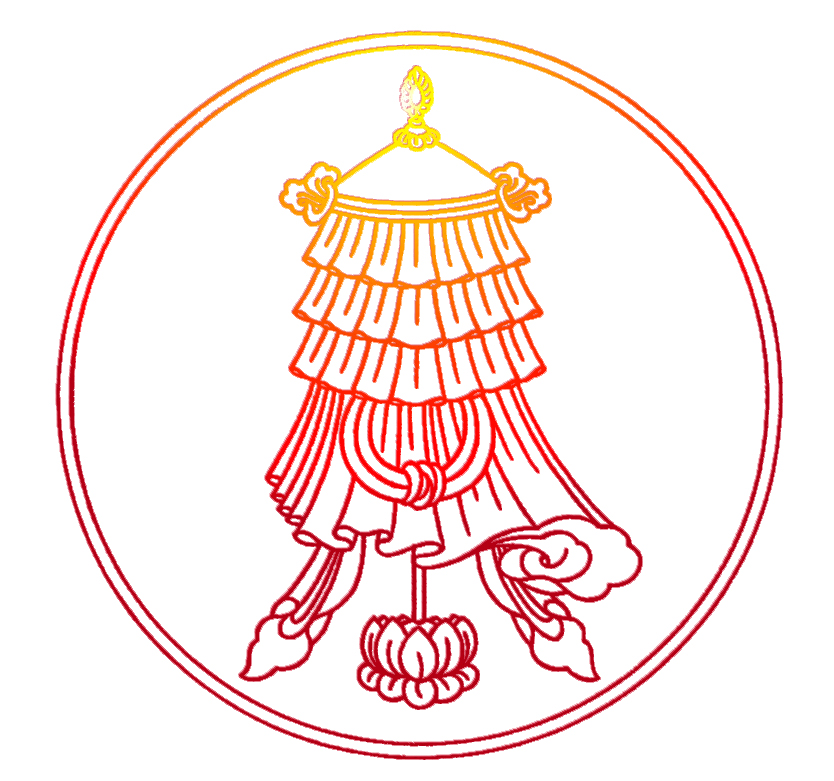
The International Mandala
By the mid-1980s, students from abroad who had attended classes at the Nyingma Institute in Berkeley had formed study groups in several countries. At first these groups mostly invited teachers from the Institute, but gradually they became interested in establishing their own centers and training their own teachers
Starting in 1989, Rinpoche took an active role in directing the growth of the four groups— two in Brazil and one each in Germany and Holland—who had demonstrated the greatest interest. He gave Nyingma Centers responsibility for guiding their development, following guidelines that he established. This process unfolded at different speed at each of the four new centers, but during the 1990s each was officially authorized by the Head Lama.
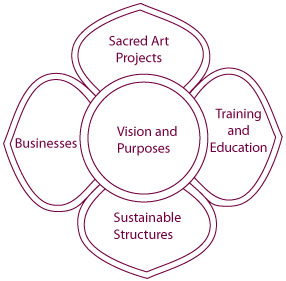
The reports here start with Nyingma Centers, which contains to have primary responsibility for directing the four international centers, and then goes on to present a brief overview of what is happening at each center. A fifth study group that started in Argentina in the 1990s was officially recognized as a center at the beginning of 2013. The Argentine center has been very active in teaching, art projects, and publishing, but until now it has not been fully integrated into the mandala structure, so it is not included in this report.
More From This Issue


Going Along With Problems
Going Along With ProblemsTarthang Tulku Adapted from an unpublished manuscript
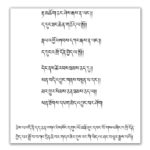
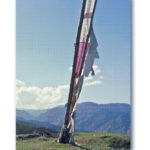
The Historic Dharma Role of Tibet
The Historic Role of Dharma in Tibet By Tarthang TulkuAdapted
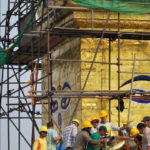
Learning from the Valley
Learning From the Valley Tsering Palmo Gellek The Svayambhu Stupa
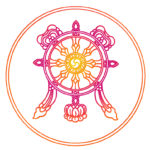
Indestructible Freedom
Indestructable Freedom Tarthang Tulku Like a cornucopia overflowing with creativity,
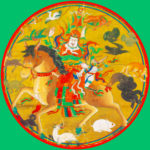
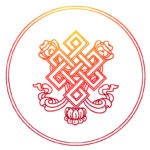

Grounds For Understanding
Grounds For Understanding Claudio Naranjo Claudio Naranjo was a student
The International Mandala
Nyingma Centers
Nyingma Centers was founded in 1976. Over its history, it has served a variety of roles, but by the late 1980s it had taken on primary responsibility for supporting the growth of the four international centers. Following the guidance of the Head Lama, each center was asked to form its own mandala of organizations, to develop a sustainable business, and to establish its own residential center.
Because the international centers are far removed from the Head Lama and the dynamic activity that brings energy and inspiration to the mandala organizations in California, offering them the necessary guidance has been a challenging task. Most of the key members at each center began their connection with Nyingma as students of Kum Nye or meditation, and it has not been easy to make the transition from being a student looking for valuable teachings and instruction to being a leader of the center mandala, ready to take responsibility for representing the Nyingma lineage and for serving the transmission of the Dharma through projects that manifest its goodness. For many years, the centers continued to think of themselves as Institutes. Only gradually has it become clear what Rinpoche meant when he asked them to form their own mandala and work toward accomplishment that could share the blessings of the Dharma and the merit of positive action.
To support this vision of what is possible, Nyingma Centers has found it especially effective to focus on the mandala structure as a guide for its own work and as a model that the key personnel at the international centers can apply in every area of their activity. The chart shows this in the “Mandala Management Structure.”
To illustrate, we present here some of the ways we implement mandala principles.
Vision and Purposes: to bring the blessings of the Dharma into Westerners’ lives and preserve the longevity of the Tibetan teachings and culture in Asia; to uphold the development of the international centers; to support the Head Lama’s projects.
At the core of the mandala, responsible for holding the vision, is the Executive Committee (Exco) of each center. The transformation of the centers in accord with mandala principles began some six years ago with a training called Mandala Management for Projects. All later developments are grounded in this approach.
To establish tangible evidence of fulfilling their vision and purpose, Nyingma Centers has worked with the centers to make sure that each of them provides human resources and an annual pledge in support of specific projects: Yeshe De, Chokyab Gar, SINI, and others. The actual financial contribution has increased by a minimum of 600% from 2008 to 2014, and in some years more.
Sustainable Structures: to set up structures that support the mandala as a whole and the needs of each center.
In the last year, this has meant clarifying that the financial commitment each center is asked to make is not a one-time pledge for a specific project, but an ongoing link to the mandala that is central to the center’s functioning as its own mandala, self-sustaining but also interconnected. It has also meant setting up professional accounting and bookkeeping in each of the centers. In addition, the bylaws of Nyingma Centers itself, and of each international center, have been completely rewritten to reflect the mandala structure and the internal visions and goals of each aspect of the mandala, and to assure that income can flow freely. The buildings that the centers occupy are fully owned (except in Germany), so sustainability in this aspect of the mandala is largely in place.
Businesses: The goal here for Nyingma Centers is to review the businesses and business opportunities at each center, to make sure they are on a sound footing and able to contribute to the mandala as intended. To fulfill this goal, there have been extensive discussions and consultations over the past two years or more, resulting in substantial changes in how the businesses are conducted: in particular, there have basic changes in Lotus Designs in Holland and Germany and Gráfico do Dharma in São Paulo, as well as ongoing discussion of prospects for developing a new trading company.
Sacred Art Projects: Each center is always working on one or more art projects. As an example, each center produces goldleafed tsa-tsas: some are available as gifts to donors, others are sent to Odiyan. In Germany and Holland tsa-tsas have been buried at the site of Nazi concentration camps to promote healing from that terrible episode in human history. Each center is also producing statues of Guru Padmasambhava, with São Paulo taking special responsibility for 108 statues to be sent to Odiyan.
Training and Education: The core commitment is to develop both students and volunteers. The student body at the centers ranges in size from 80–120 each month, and the number of stable volunteers in center projects ranges from 20–35. Across all the centers, there are forty teachers and leaders in training, each asked to become a member of TNMC.
From 2012 through 2015, Nyingma Centers has been running a Leaders and Teachers Training Program; currently the focus is on a program called Mandala Management for Education. At the same time, we have been implementing a revision of the curriculum for each center’s institute, organizing programs into eight departments, each of which will offer a gateway to the center’s mandala as a whole. Online teaching is integrated into this structure. The centers have spent the past two years training and preparing for this change, which will be fully implemented in 2015. A retreat for teachers and leaders is being held at the Nyingma Institute and Ratna Ling in July 2014, on the theme “Learning to become a Dharma practitioner: Refuge leading to Bodhicitta.”
In addition, a pilot program at the Dutch Center is training a new generation of leaders. Based on Rinpoche’s “36 Points on Community” and the Mandala Management for Projects structure, the program focuses on project management as training in karma yoga. This program is for senior members in the centers, while skillful means training is presented to all volunteers.
Looking back over the last two to three years, we can say that there have been strong developments at all four centers in two major areas. One is in terms of the ‘body’ of the mandala, with each center making major improvements in its buildings and resources. The second relates to the management of the centers. Two years ago, we began to address long-standing difficulties with management, using mandala principles to let the individuals involved see for themselves the source of any problems. The results have been very positive: each center is now functioning much ore smoothly and with a greater sense of stability. Next we present brief reports on each of the centers, apart from Argentina.